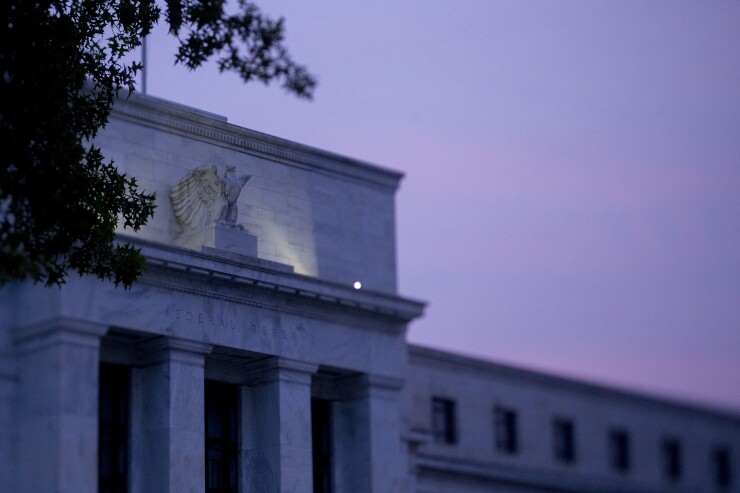The ability to track funds minute by minute is starting to seem like a true reality, but widespread implementation is not that simple.
In 2015, the Federal Reserve assembled its Faster Payments Task Force, a group of more than 300 diverse payments industry stakeholders tasked with creating the road map to safer, ubiquitous, faster payments, or real-time payments, by 2020.
With real-time payments, the bottlenecks typically experienced with moving money between accounts and businesses will be eased. People will no longer have to wait hours or days to access their money and businesses will be able to reconcile accounts more quickly, improving their cash management.

Last fall, less than two years after the task force was created, the very first transaction was made over RTP, a new real-time payments system from The Clearing House, a bank-owned institution established in 1853.
With the three-second transaction process of $3.50 between a single client of both Bank of New York Mellon and U.S. Bancorp, the U.S. banking industry took a significant step towards meeting customer demand for immediate cash access. And others are quickly following suit with the announcement of Citi, JPMorgan, PNC, SunTrust and Fifth Third in recent weeks, companies that collectively were the industry’s earliest adopters of RTP.
But there are challenges.
Financial institutions in the U.S. are not only under tremendous pressure to determine how they’ll become a part of the new payments ecosystem, but also what the shift to immediacy will mean to their current operating model, long-term strategy, and future relevance to consumers and corporates. They aren’t wrong to be concerned.
The arrival of faster payments could redefine the role financial institutions play in the U.S. financial services system, and prove the critical shift that determines which providers stay relevant in the payments revolution. Here’s why.
Faster-payments schemes may be new to the U.S. — but they’re not in other parts of the world. A recently published
The leaders in global faster-payments schemes share commonalities. They adapt their processes and systems to innovate; they prioritize the trifecta of speed, context and openness to create the instant service and experience that’s required to continually stay one step ahead of other financial institutions and fintech disruptors.
With the Payments Service Directive (PSD2) implementation now in effect, banks in Europe will be required to allow regulated third parties to access account information and payment initiation via open APIs. With that shift, we’ll see more payment providers entering the market, many of which will continue to innovate the payments landscape. Those lowered barriers and shifts to openness may not be felt immediately in the U.S., but eventually, the impacts will seep into global payments. Eventually, those evolutions could disrupt the primary provider status financial institutions have long enjoyed over disruptors.
Financial institutions in the U.S. are just now making sense of what faster payments will mean to their business. However, without the systems that equip them to keep pace with payments modernization and remain agile as payments continue to evolve, they’ll face an ongoing battle for relevance in 2020 and beyond.
Many financial institutions in the U.S. are still struggling to determine how to enter the faster- payments ecosystem in a way that satisfies demand and aligns with existing processes. They’re not wrong to consider the impact a shift to faster payments will have on legacy systems, processes and longer-term business value — but there’s little time to waste.
Those who leverage technologies that allow them to quickly enter the real-time payments infrastructure have an immediate opportunity to seize a competitive advantage and learn first-hand what it will take to lead the new payments ecosystem in America.
Whichever path they choose, financial institutions that have already road-tested faster payments can position themselves as leaders come 2020. Those that hesitate to determine their role in the faster payments risk falling so far behind in the payments modernization movement that they never recover.





